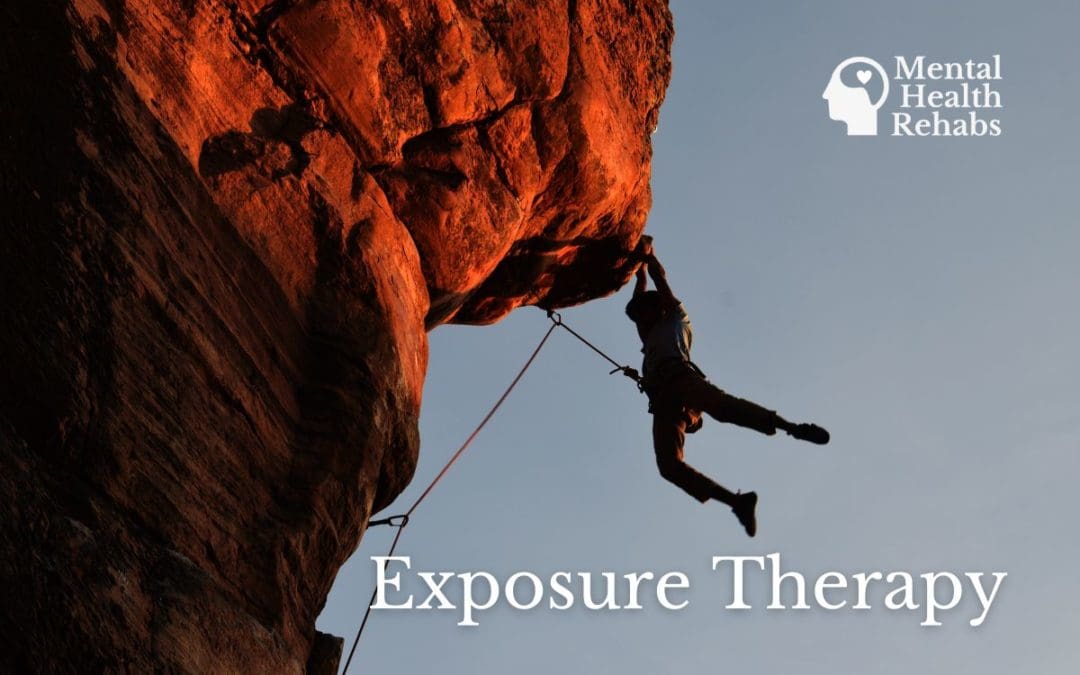Sometimes you’ve just got to face your fears—literally. Exposure therapy is this precise practice. It’s an evidence-based type of behavioral therapy that has a person face the source of their feelings of fear, panic, or anxiety to help gain greater control over their triggers. It’s used to treat mental illnesses that deal with strong emotional responses such as obsessive-compulsive disorder (OCD), post-traumatic stress disorder (PTSD), phobias, and various types of anxiety disorders. There are several different types of exposure therapy that can affect how it’s used and for which conditions.
How Does Exposure Therapy Work?
The general principle behind exposure therapy is that repeated encounters, real or simulated, with the things that frighten us, will help with overcoming that fear. By doing so, we can train our brains to have a less intense reaction helping to make that object or situation less disruptive to our lives. This works to desensitize our emotional response so that those negative feelings become less intense.
As basic as the principle of this therapy modality may sound, it’s actually quite effective. It’s strongly recommended by the American Psychological Association (APA) for the treatment of numerous disorders. Multiple studies have found it to be highly effective with up to 90% of participants responding positively.
Since its early origins in the 1920s, numerous exposure therapy techniques have been developed and utilized by psychologists as a way to help people better manage their mental illnesses.
4 Types of Exposure Therapy Techniques
Exposure therapy can be grouped based on two main factors: the pace of the exposure and how that exposure is carried out. The pace will largely influence how exposure is approached, either gradually or suddenly, which may affect the technique used by the therapist.
In Vivo Exposure
Direct confrontation with the fear in real-time. This technique isn’t always practical for certain types of triggers like combat or a phobia of vomiting. In those situations, virtual reality exposure can recreate the experience or situation without putting the person in any harm.
Virtual Reality Exposure
A newer technique enabled by advancements in technology, virtual reality exposure is essentially in vivo exposure but via an immersive simulation.
Interoceptive Exposure
Interoceptive exposure deliberately causes physical sensations that are associated with the fear response. In this technique, the therapist might ask the patient to do jumping jacks or run in place to induce effects like increased heart rate or heavy breathing. The goal is to normalize those sensations and eliminate them from being associated with something fearful.
Imaginal Exposure
Imaginal exposure uses vivid detail to trigger feelings of fear or anxiety. A therapist may describe a situation themselves or have the patient do so by speaking out loud or reading a written description of what they fear. It can also involve recounting previous instances of the fear/stress/panic response.
Pace of Exposure
Graded Exposure
As its name implies, graded exposure is a type of exposure therapy that starts small and then escalates the encounters with the feared object or situation. For a person with a fear of spiders, rather than having to interact with a real live spider, the graded exposure approach may have that individual first start with looking at a picture of a spider or having one described to them. As treatment continues, they may move on to being in the same room as a spider and even holding one.
Systematic Desensitization
Systematic desensitization, as a concept, embodies the cornerstone of exposure therapy, that just as our muscles and memory can be conditioned, so too can our emotional response. However, it’s also a specific exposure therapy technique that has a focus on controlling the physical responses to fear. This technique will emphasize things like muscle relaxation and diaphragmatic breathing in the face of the fear-inducing stimulus.
Flooding
Flooding is the most intense form of exposure therapy. Unlike graded exposure or systematic desensitization, this technique is not aimed to keep the individual in a calm emotional state. Flooding involves direct exposure for maximal anxiety stimulation. Understandably, this technique can be extremely stressful and sometimes, even traumatic. However, it’s the fastest way to desensitize the brain to the source of fear.
How To Get Exposure Therapy
While we may not be able to completely conquer our fears, exposure therapy can be highly effective in helping those with mental illness lead a more normal life. Fortunately, this is a relatively mainstream type of therapy so it’s not difficult to find exposure therapy services.
Exposure therapy is offered by several different types of mental health professionals: psychiatrists, psychologists, and therapists. The potential for this approach to be highly upsetting necessitates having an experienced exposure therapist by your side. Find one at a mental rehab near you today.

